Fontaine and Maury Photos
|
This drawing is of the house of Jean de la Fontaine (ca. 1500-1563) and his family, where they were murdered by Catholic troops in 1563. The fortified château at Sévilly, just outside the small town of Ste.-Sabine-sur-Longève in the Department of La Sarthe, France, is still standing. The house was identified through meticulous research by Paul Mason of West Sussex, England. Copy of the postcard is courtesy of Joe Fontaine. |
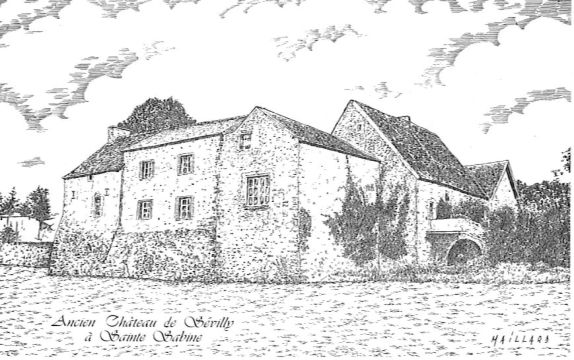 Postcard Drawing of Jean de la Fontaine's Home at Sévilly |
On 22 October 1685, Louis XIV issued an Edict of the Revocation of Nantes which removed the rights of Huguenots to practice their own religion. As a result, the Reverend Jaques Fontaine, his fiancé Anne Boursiquot, her sister Elisabeth, and his niece Janette Forestier fled France for England, landing in Appledore on 1 December 1685.
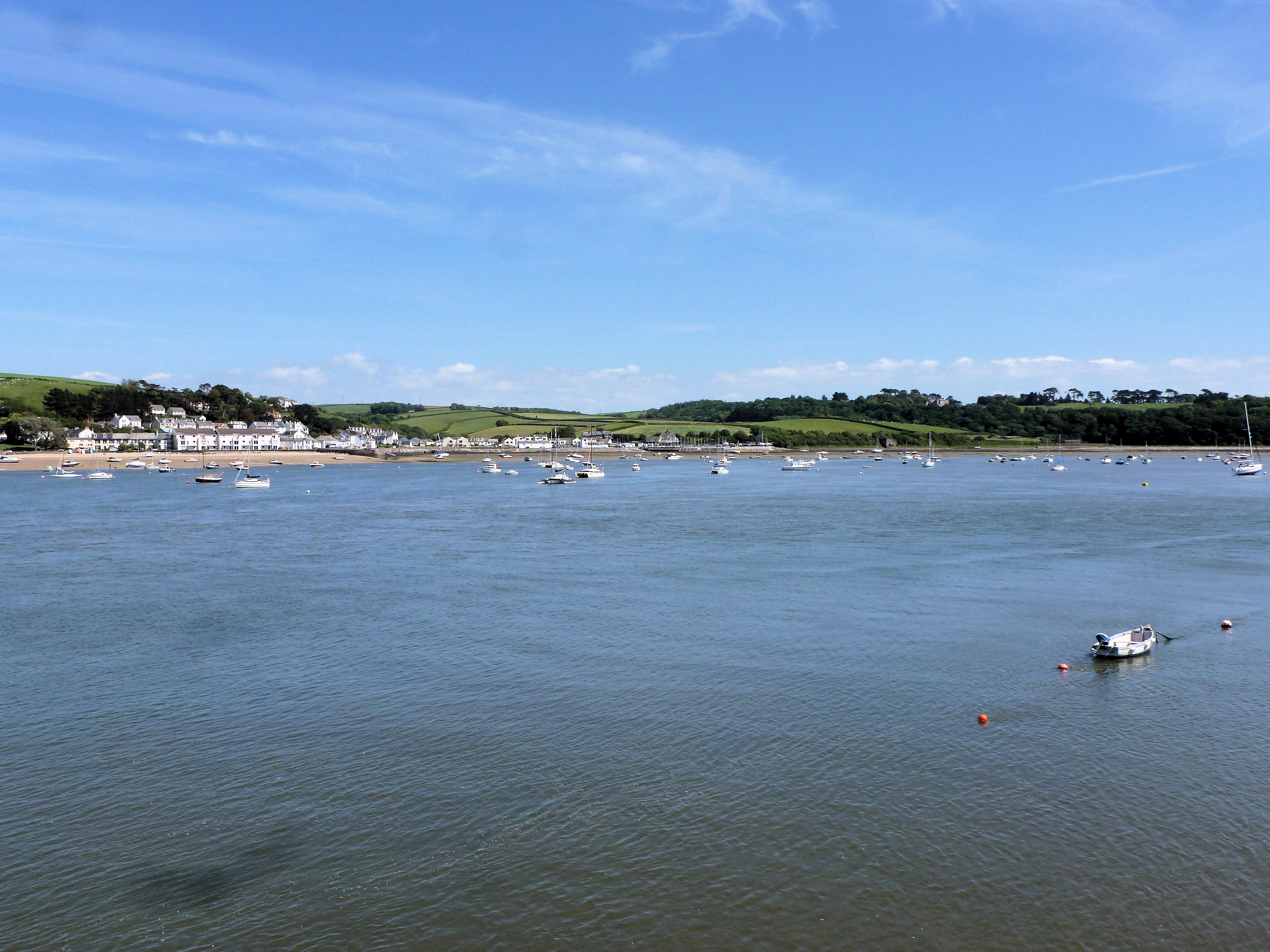 View approaching Appledore (click image to open larger image in a new window) |
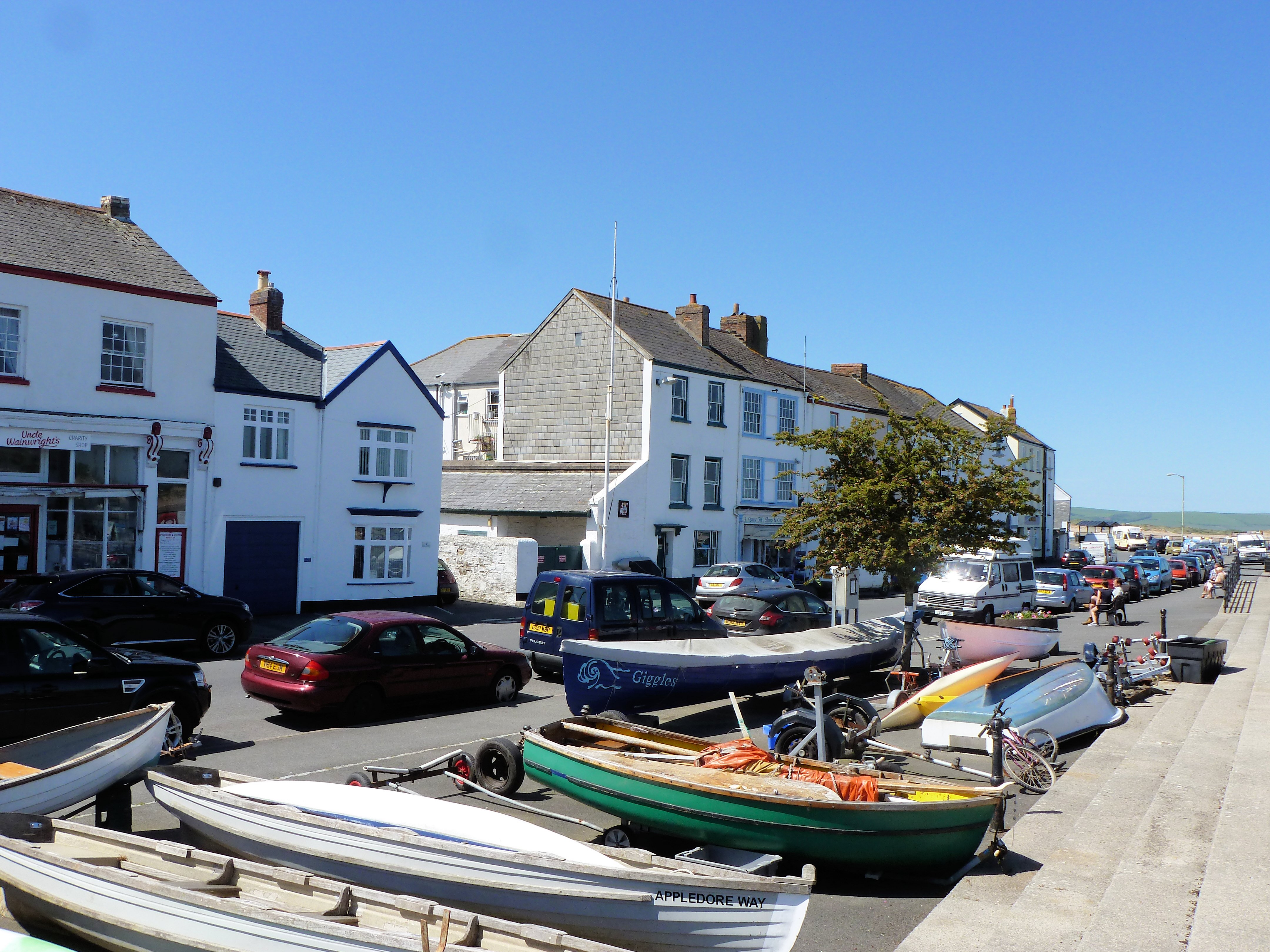 Present-day Appledore where the Fontaines landed in 1685 (click image to open larger image in a new window) |
Jaques Fontaine and Anne Boursiquot were married on 8 February 1686 at St. Anne's Chapel in Barnstaple, England. Today the chapel is a community center.
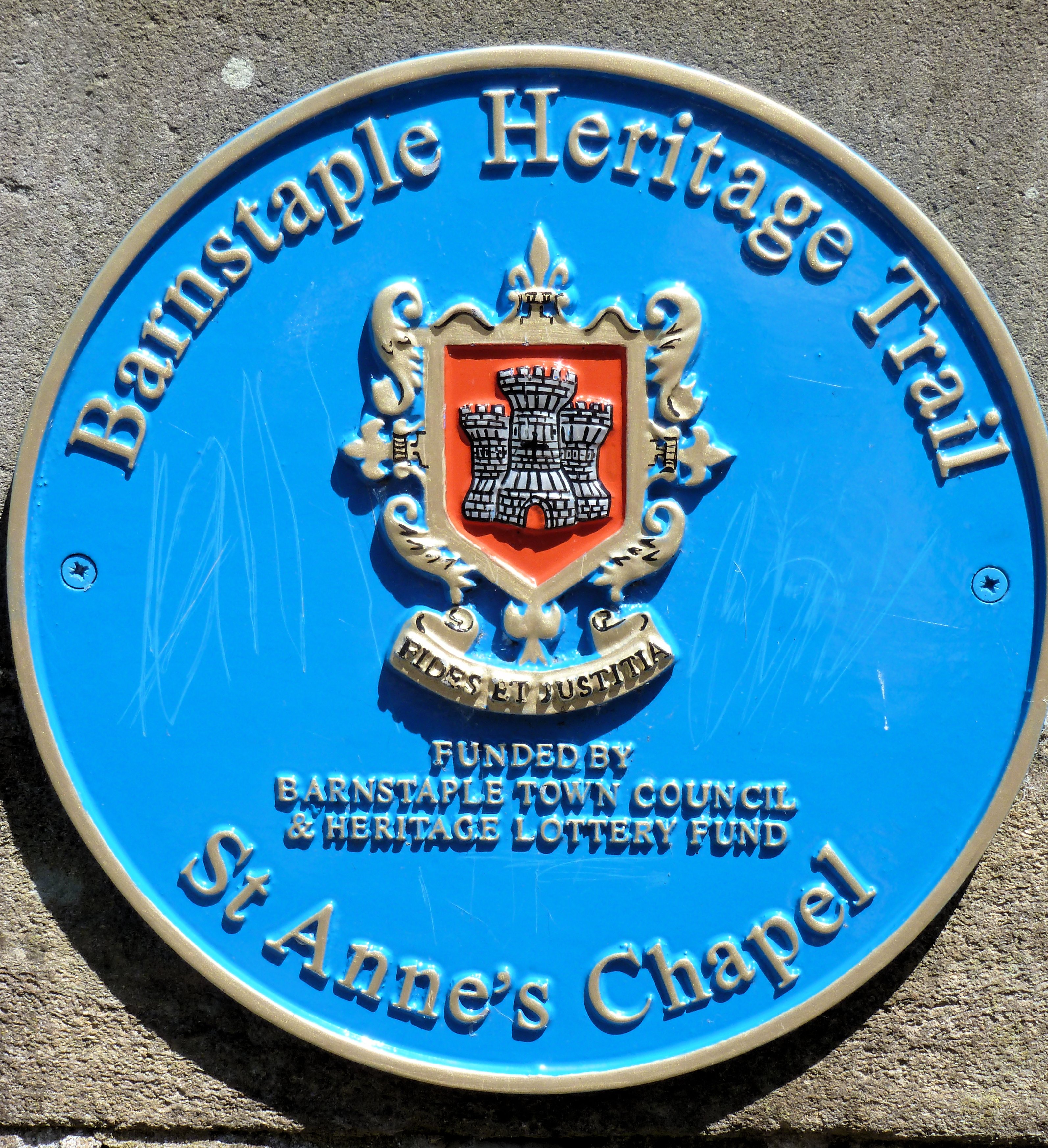 Barnstaple historical marker for St. Anne's Chapel. (click image to open larger image in a new window) |
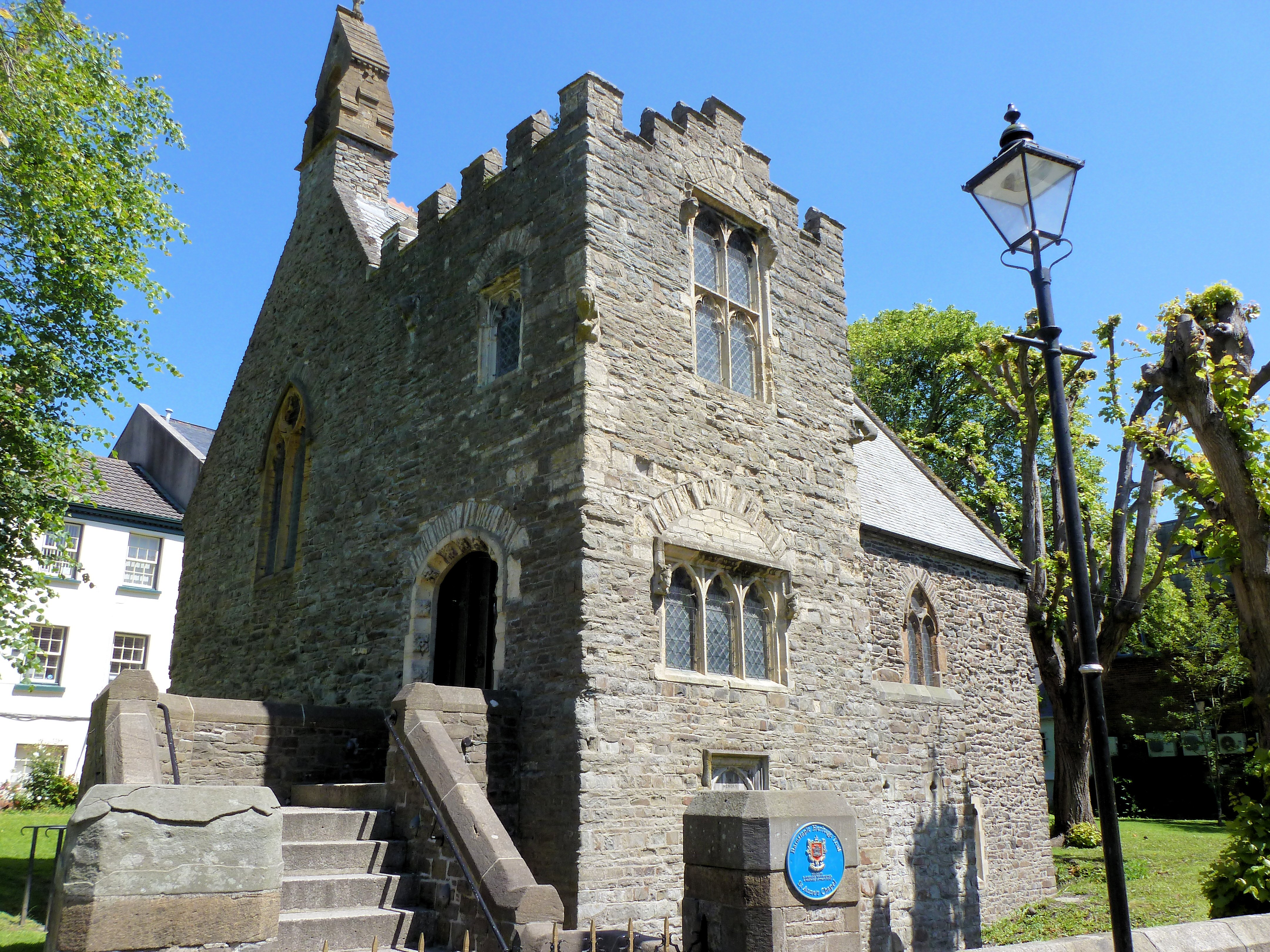 View of St. Anne's Chapel where Jaques and Anne were married. (click image to open larger image in a new window) |
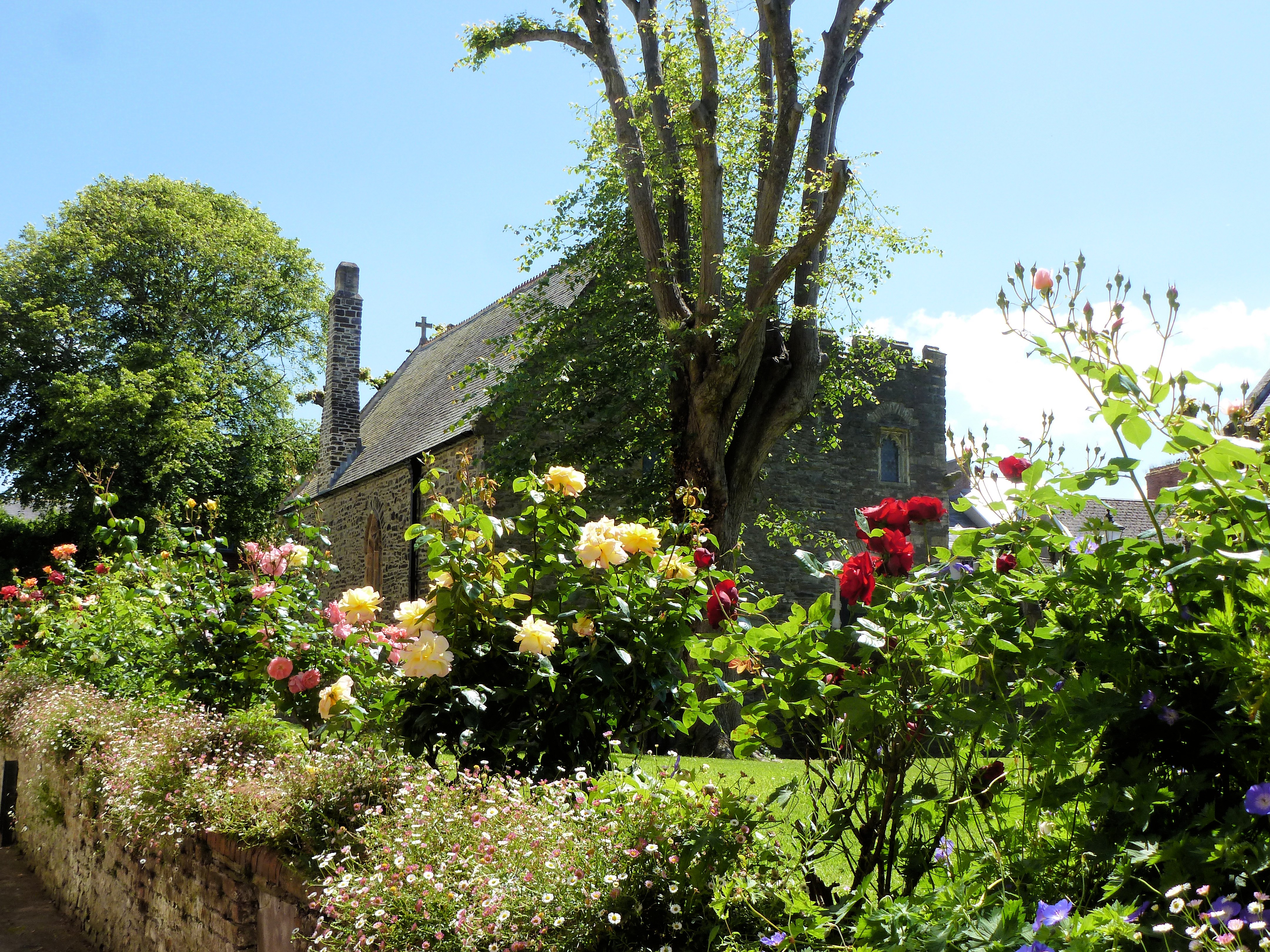 Another view of St. Anne's. (click image to open larger image in a new window) |
All the above photos by Brian Nilsson.
Jaques and Anne moved with their young family to County Cork in Ireland in 1694. They settled on Bantry Bay, on the southern coast of Ireland, that same year where he leased a farm and some surrounding land where he set himself up as a farmer and fisherman. They faced all sorts of challenges, including an attack by French privateers in 1704.
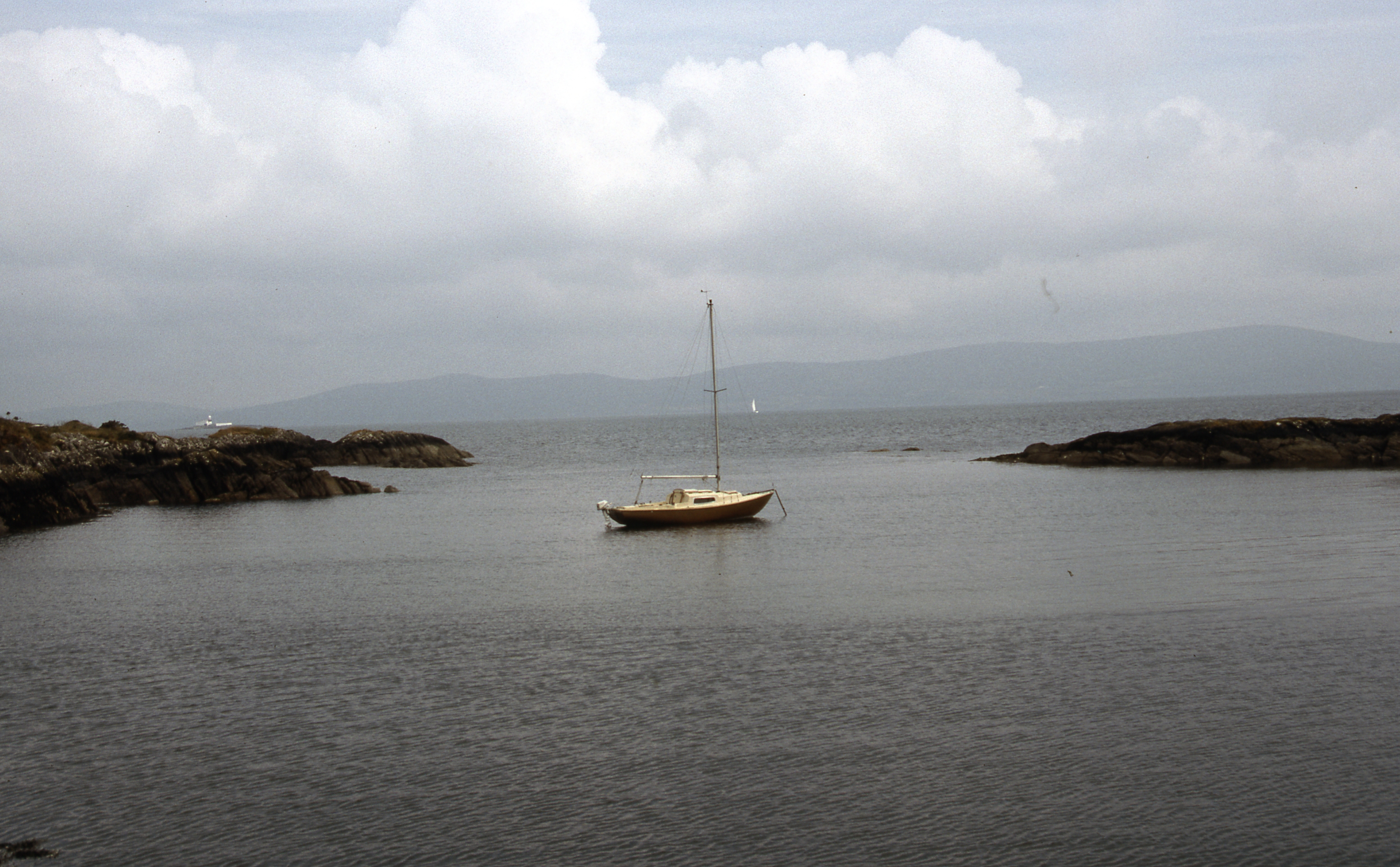 Harbor where Jaques Fontaine likely had his fishing operation. (click image to open larger image in a new window) |
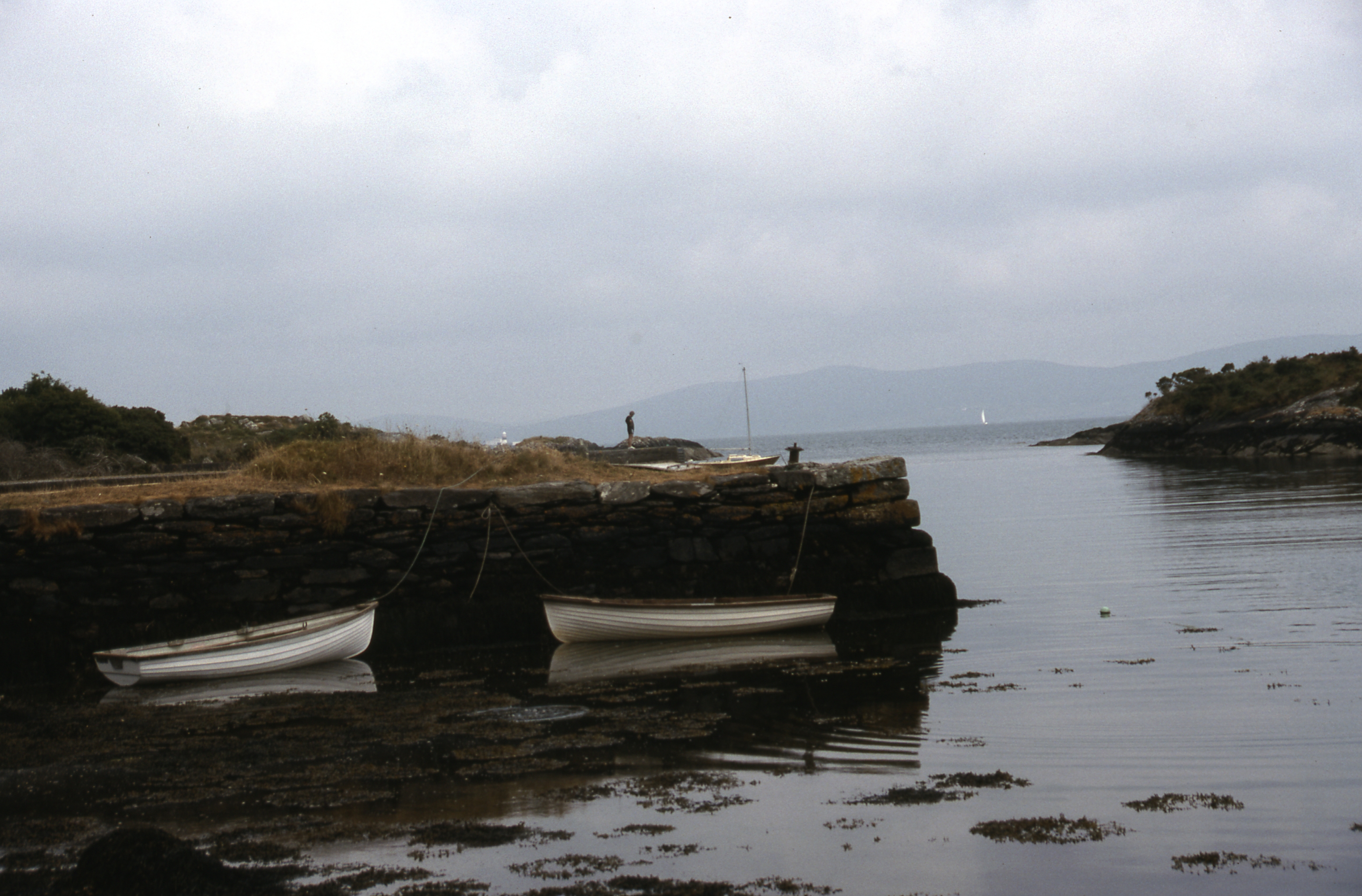 Harbor with Fontaine Fort likely on left side of photo on the flat area. (click image to open larger image in a new window) |
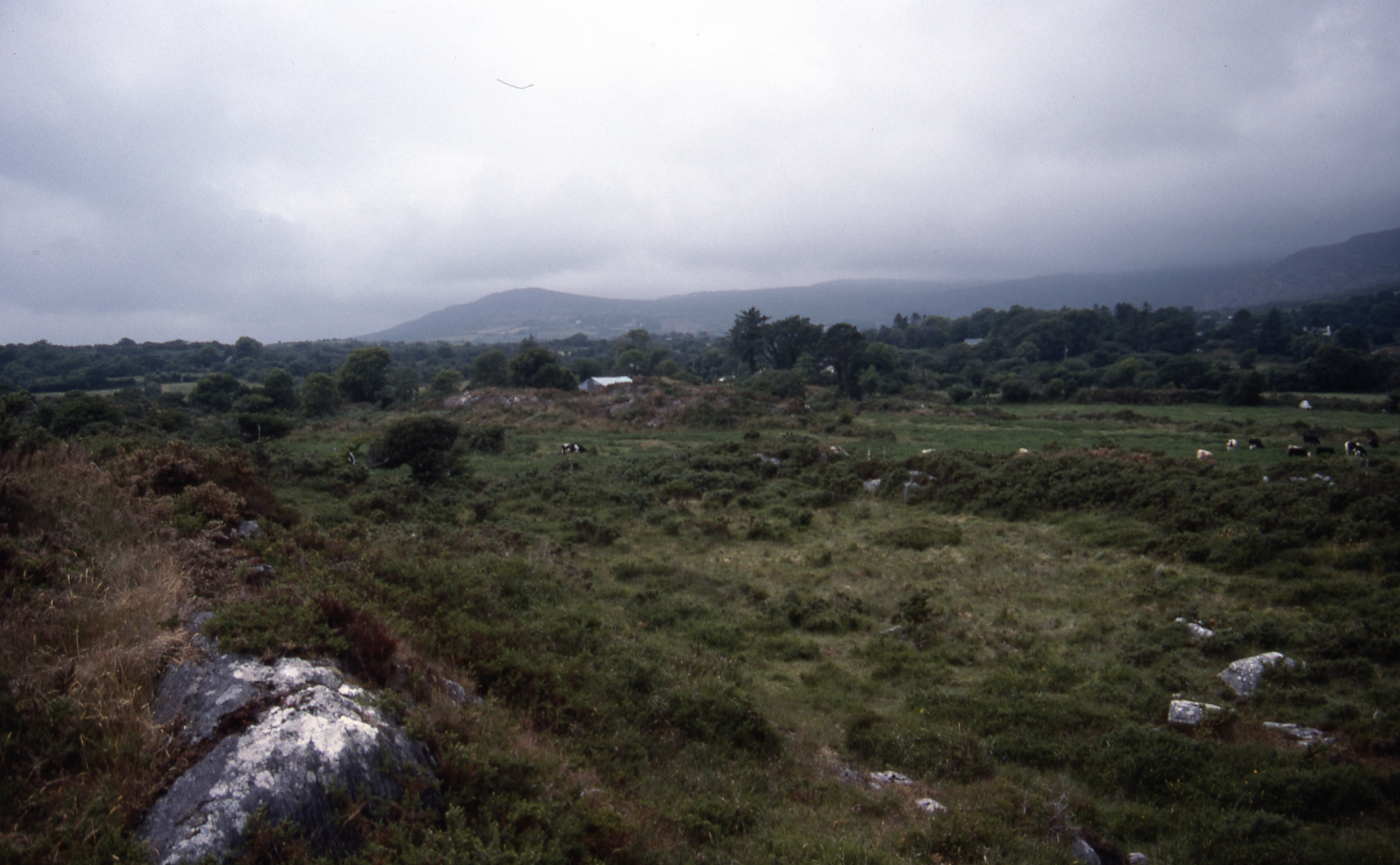 Likely ruins of Fontaine Fort - the original stones from the buildings may have been scavenged to build walls to pen in the sheep. (click image to open larger image in a new window) |
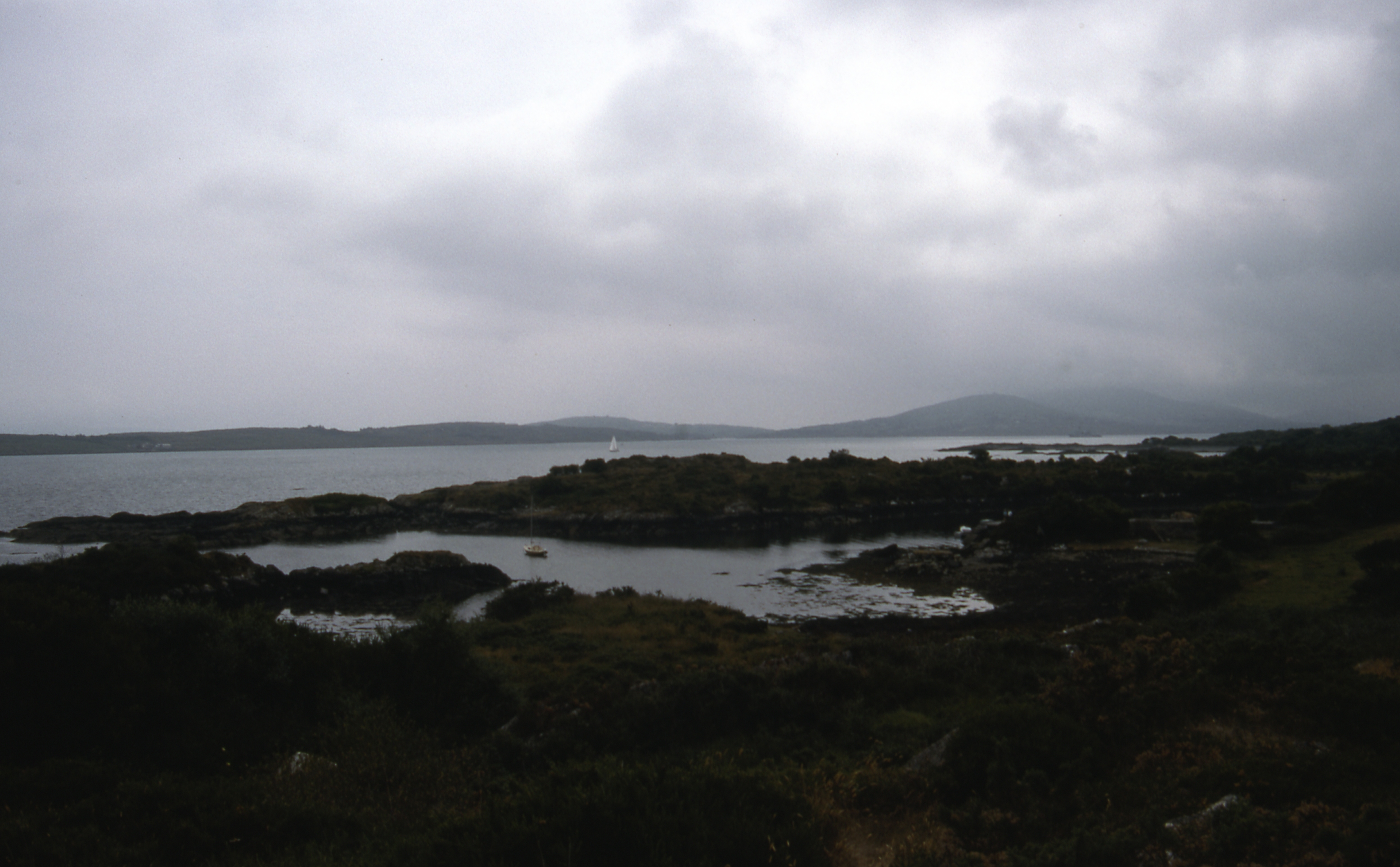 Fontaine Fort left midpoint in the photo (click image to open larger image in a new window) |
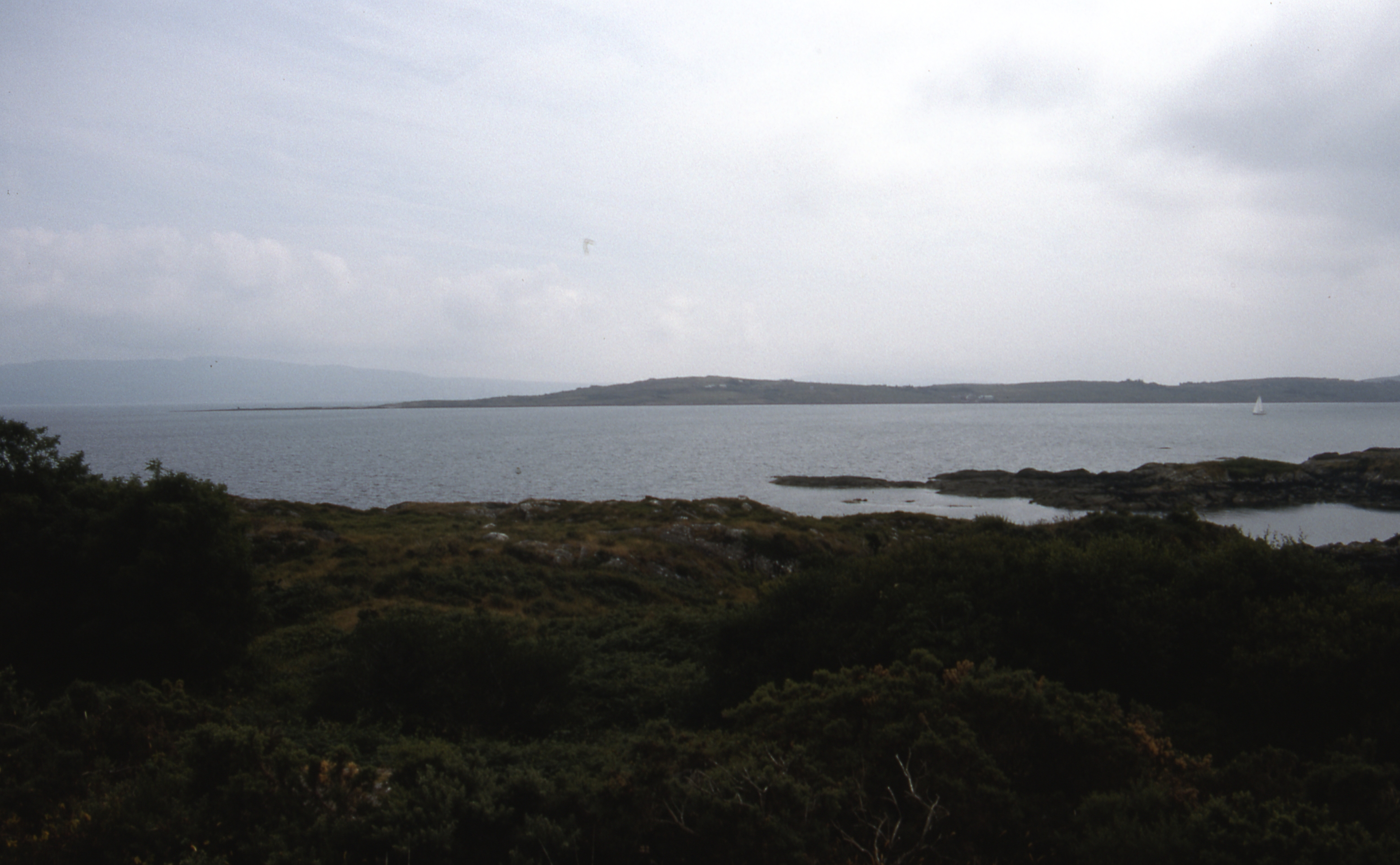 Harbor where Jaques Fontaine likely had his fishing operation is the small area in the middle of the photo (click image to open larger image in a new window) |
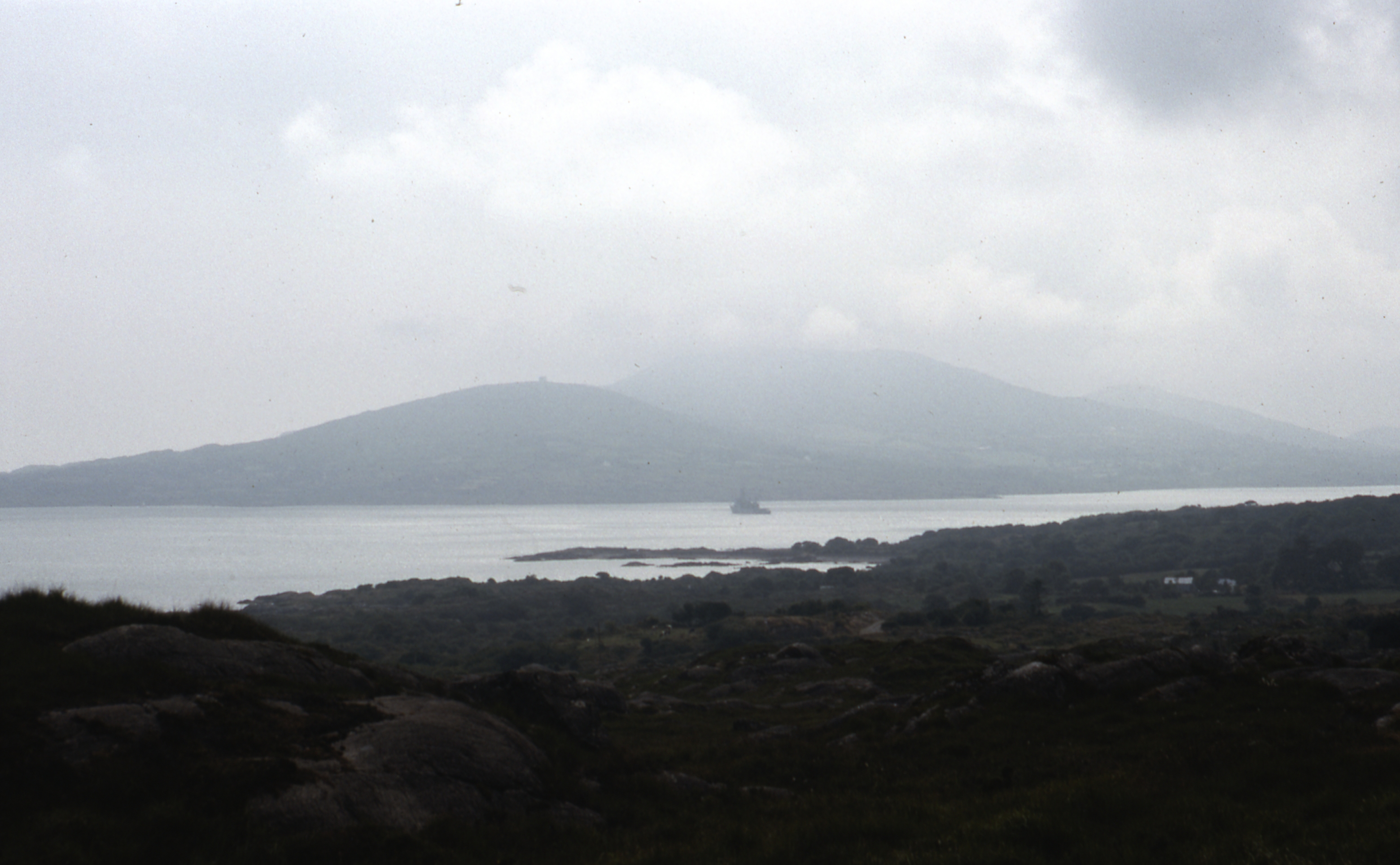 Looking south from Hwy R572 just east of Castletownbere. The harbor is 1-2 miles south of the highway accessed by a rough road. (click image to open larger image in a new window) |
The above Irish photos by Joe Fontaine.
In 1705 Jaques Fontaine was pensioned for his "good services in his defence against a French Privateer" at which point he and Anne moved to Dublin to retire. They are buried in the Huguenot Cemetery on St. Stephen's Green in Dublin.
Jean was the great-grandfather of James (Jaques) Fontaine who fled to England and Ireland and who left behind his memoirs that provide such rich details on the early Fontaine family history. James and his wife Anne Elizabeth Boursiquot Fontaine died in Dublin, Ireland, in the early 1720s and are buried in the Huguenot Cemetery on Merrion Row on St. Stephen's Green in Dublin. Their graves are not marked, so the exact location of their graves is not known.
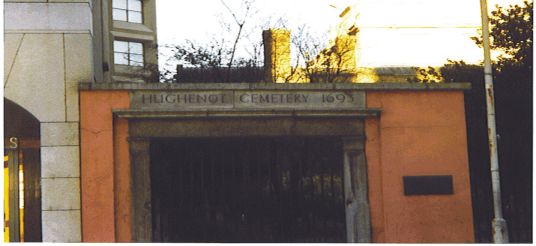
Gated entrance to the Huguenot Cemetery on Merrion Row, St. Stephen's Green, Dublin
| A view inside the cemetery. The large plaque lists the family names of the Huguenots buried in the cemetery. The smaller plaque is a memorial to James Fontaine and Anne Boursiquot Fontaine. | 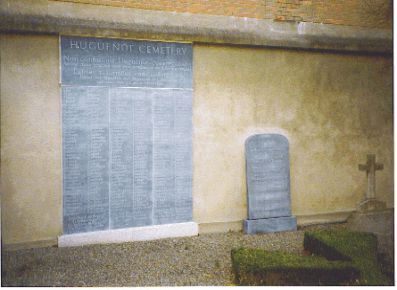 |
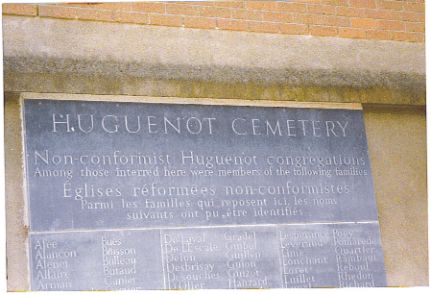 Photographs of the Huguenot Cemetery by Brian H. Nilsson | 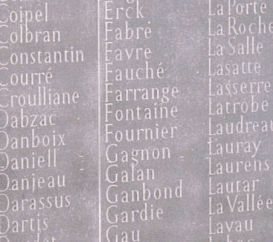 |
On May 15, 1999, our Society dedicated the Fontaine plaque to honor the memory of our
Fontaine ancestors who were buried in the Huguenot Cemetery. At the dedication observance
a large triptych shown above was also unveiled. It honors all those families who had
members buried in this cemetery. Vivien Costello, the chairman of The French Huguenot
Fund, Dublin's oldest registered charity, which administers the cemetery, hosted the
cemetery. The efforts of the French Huguenot Fund along with those of the Fontaine Maury
Society made possible the achievement of our goal of placing a memorial in the cemetery.
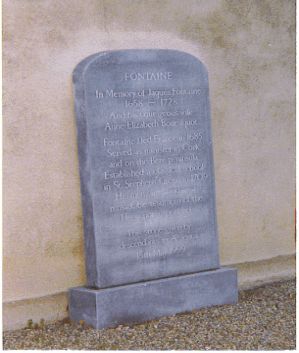 |
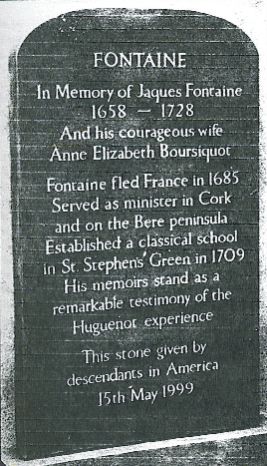 |
The dedication ceremony included a prayer by Pasteur Dr. Hugh Boudin of the French
Protestant Church, Canterbury, and an address by Professor Ruth Whelan of the National
University of Ireland, Maynooth.
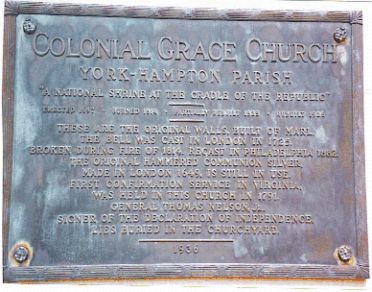 Photos by Brian H. Nilsson |
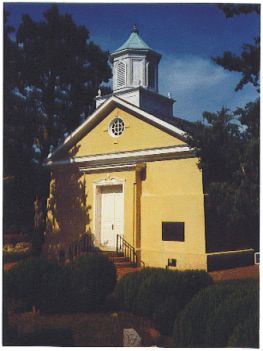 |
Grace Church in Yorktown, Virginia. The Reverend Francis Fontaine was the rector here
for York-Hampton Parish from 1722 to 1749, when he died. He is believed to be buried in
the churchyard.
James and Anne Fontaine's 7th of eight children, the Reverend Francis Fontaine (1697-1749), joined most of his siblings in settling in the Virginia colony. When he first came to Virginia, he was minister of the French settlement at Manakintown, Virginia, from 1720 to 1722. In 1722 Francis was installed as rector of York-Hampton Parish. In 1724 ministers in Virginia and Maryland filed reports with the Bishop of London on the status of colonial Anglican churches. Francis provided answers to 17 queries about the state of his parish and ministry. It is apparent from the report that Francis was licensed by the Bishop to serve as "a missionary in the government of Virginia." This means that he had no permanent contract with the church. Francis remained in service at York-Hampton Parish until his death there in early 1749. He is believed to be buried in the churchyard but there is no marker or indication that he is buried there.
It was Francis' older brother, John Fontaine (1693-1767), who first came to Virginia and obtained property where his siblings could settle. He led an adventurous life, accompanying Virginia governor Alexander Spottswood in August and September 1716 on an expedition across the Blue Ridge mountains to the Shenandoah Valley. That expedition is famous because of the journal kept by John Fontaine.
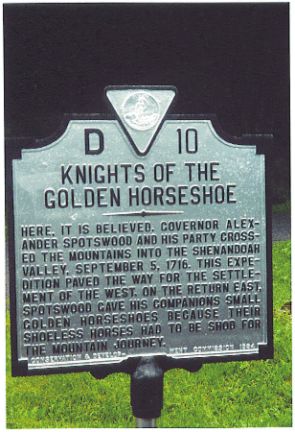 |
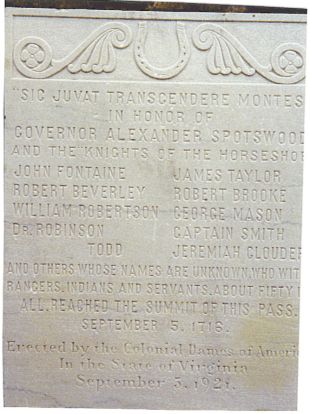 |
By the summer of 1719 John Fontaine had finished his mission as an advance man for his siblings. His siblings the Reverend Peter Fontaine and James Fontaine had arrived by this time, as had his brother-in-law Matthew Maury. Another brother, the Reverend Francis Fontaine, was soon to arrive. John returned to Europe, first to London and then to his parents' home in Dublin. By 1748 he was living with his own family at Llanllwch, in Carmathen, Wales, where he later purchased a farm.
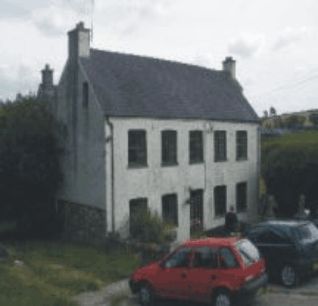 |
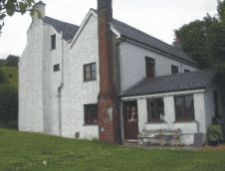 Cwm Castle, in Carmathen, Wales, home of John Fontaine (1693-1767) |
In November 1752 he expanded his holdings by purchasing Cwm Castle, the house in these pictures. He had been angered when Parliament in 1750 had forced the Bank of England to cut the interest rate on government annuities from 4 to 3 percent, so he decided to invest his money in Welsh farms.
He and his family lived at Cwm Castle, as well as his brother Moses Fontaine and sister
Elizabeth Torin.
John was the last child of James and Anne Fontaine to die. He died at the age of 74 in 1767 and was buried on November 26, 1767, in the Newchurch, Carmathen, churchyard. His wife, Mary Sabatier Fontaine, died in 1781 and is buried with her husband.
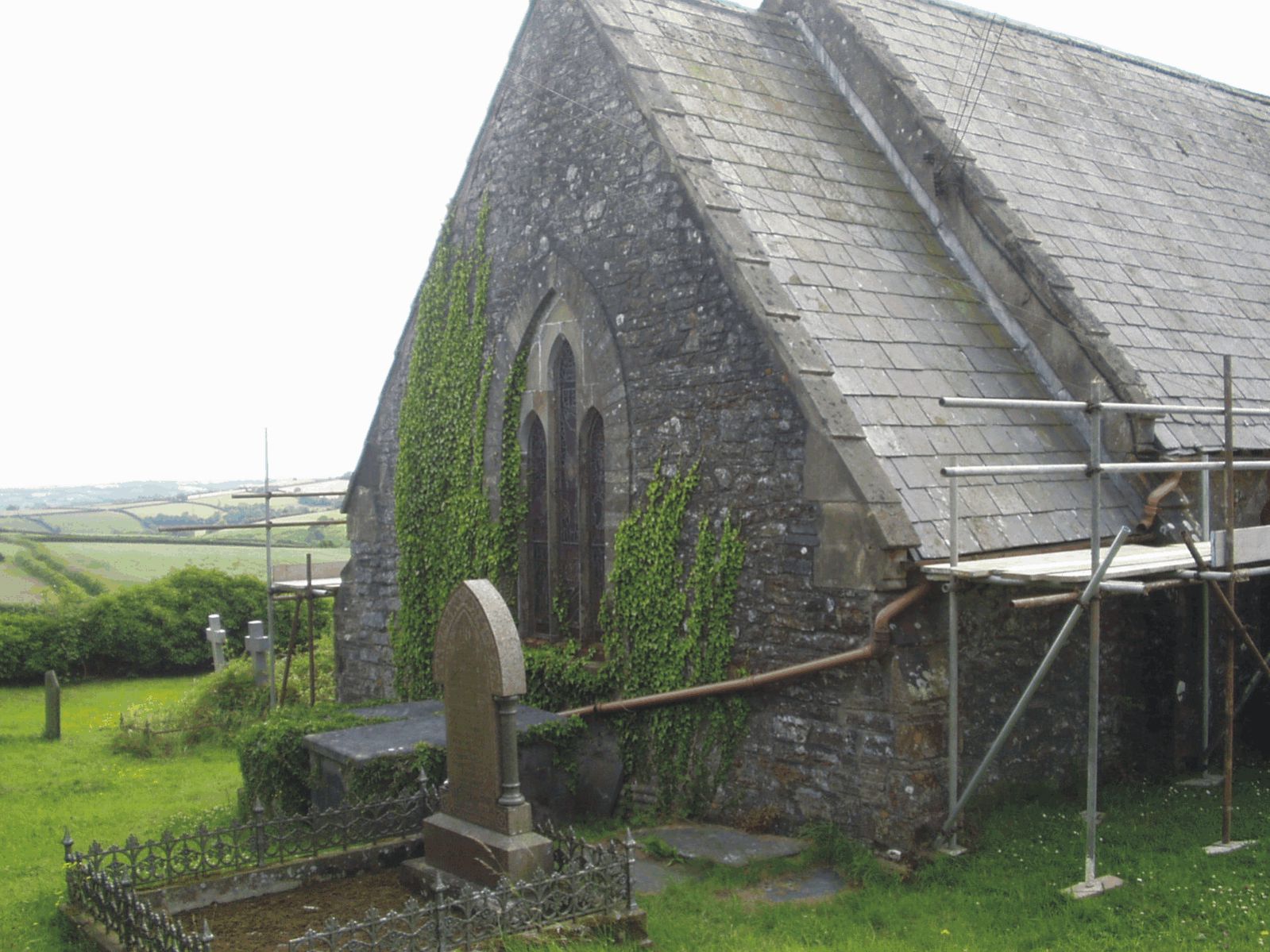 Church in Newchurch, Carmathen, Wales |
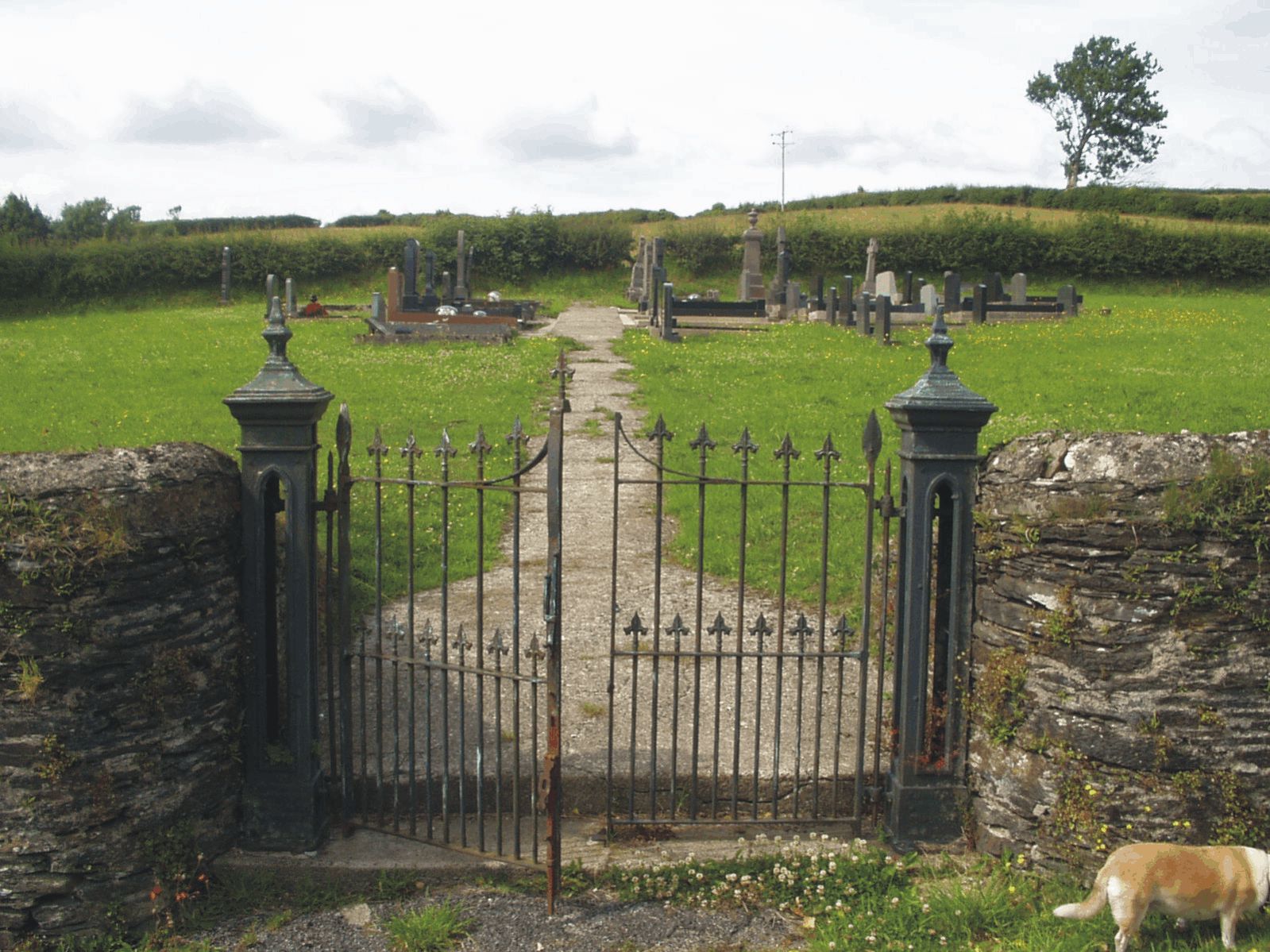 |
(click on either image above to open larger in a new window) Welsh photographs were taken and made available courtesy of Daniel Jones of Carmathen, Wales.
In June 2003 the Society held its annual meeting in Ashland, Virginia, near where the Fontaine family settled in the early 1700s. We visited Beaverdam Plantation in Hanover County, Virginia, the farm where the early Fontaines lived, and participated in a Sons of the American Revolution (SAR) ceremony in the Fontaine family cemetery. The SAR placed a marker on the grave of Lieutenant Colonel William Fontaine (1753-1810), a Revolutionary War veteran who was with George Washington at the British surrender in Yorktown. William Fontaine was a son of Peter Fontaine Jr. and Elizabeth Winston Fontaine, and grandson of the Reverend Peter Fontaine (1691-1757), who joined his siblings who came to Virginia.
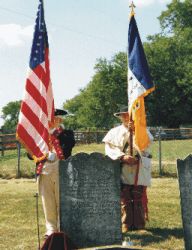 (click image to open in a new window) |
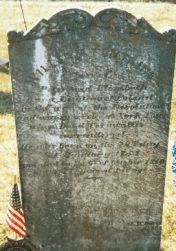 (click image to open in a new window) |
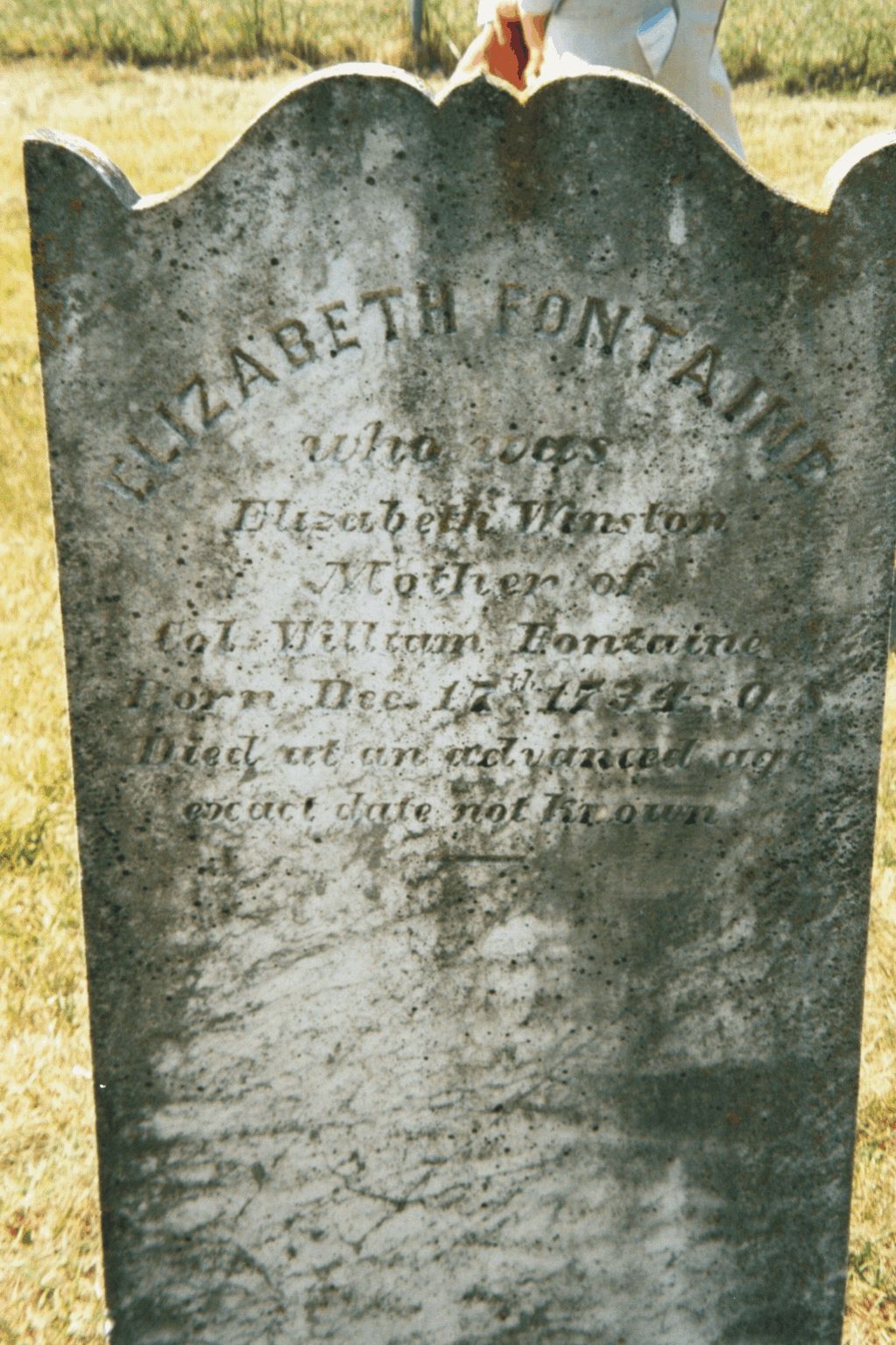 Graves of William Fontaine and his mother, Elizabeth Winston Fontaine (click on image above to open in a new window) |
Family member James Maury (1746-1840), a grandson of Mary Anne Fontaine and Matthew Maury, was appointed by President George Washington to be the first American Consul overseas, to be posted in Liverpool, England. He served there from 1790 to 1829. In 2008 a new building was built in Liverpool where the old consulate once stood. The American eagle statute that was on the original consulate was added back to the new building in 2008.
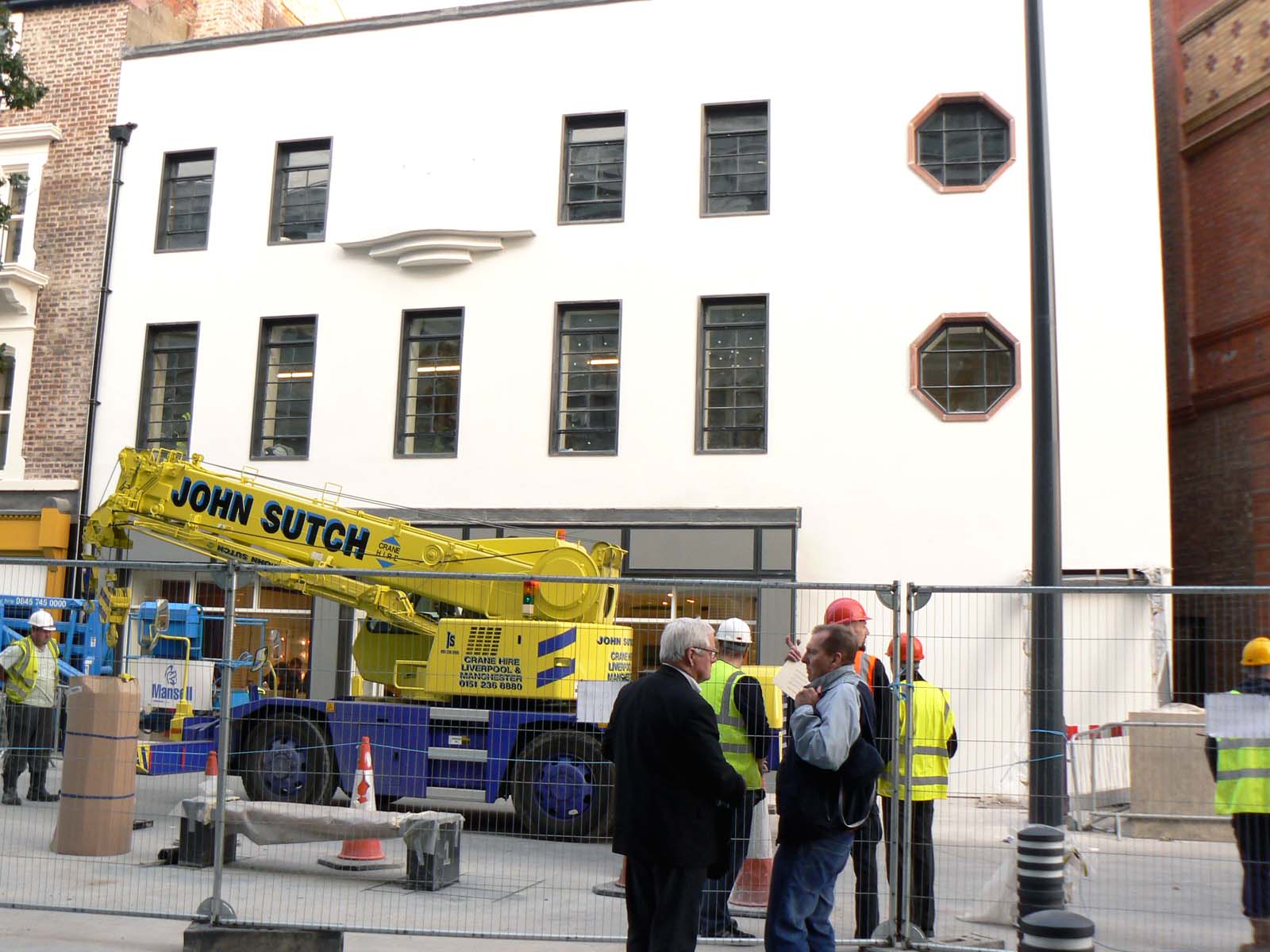 New building with shelf intended for American eagle (click image to open larger image in a new window) |
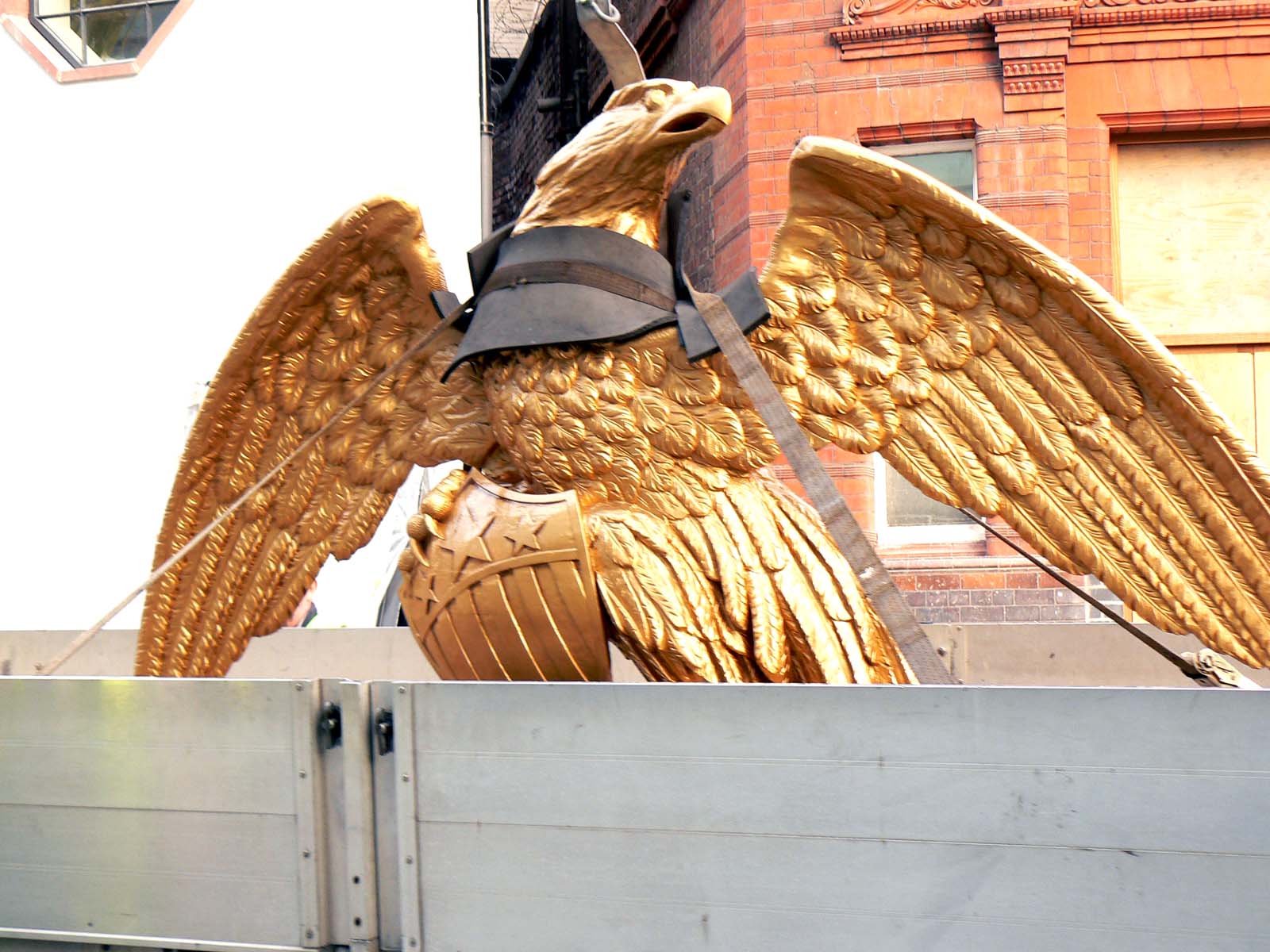 American eagle ready to be lifted to the shelf (click image to open larger image in a new window) |
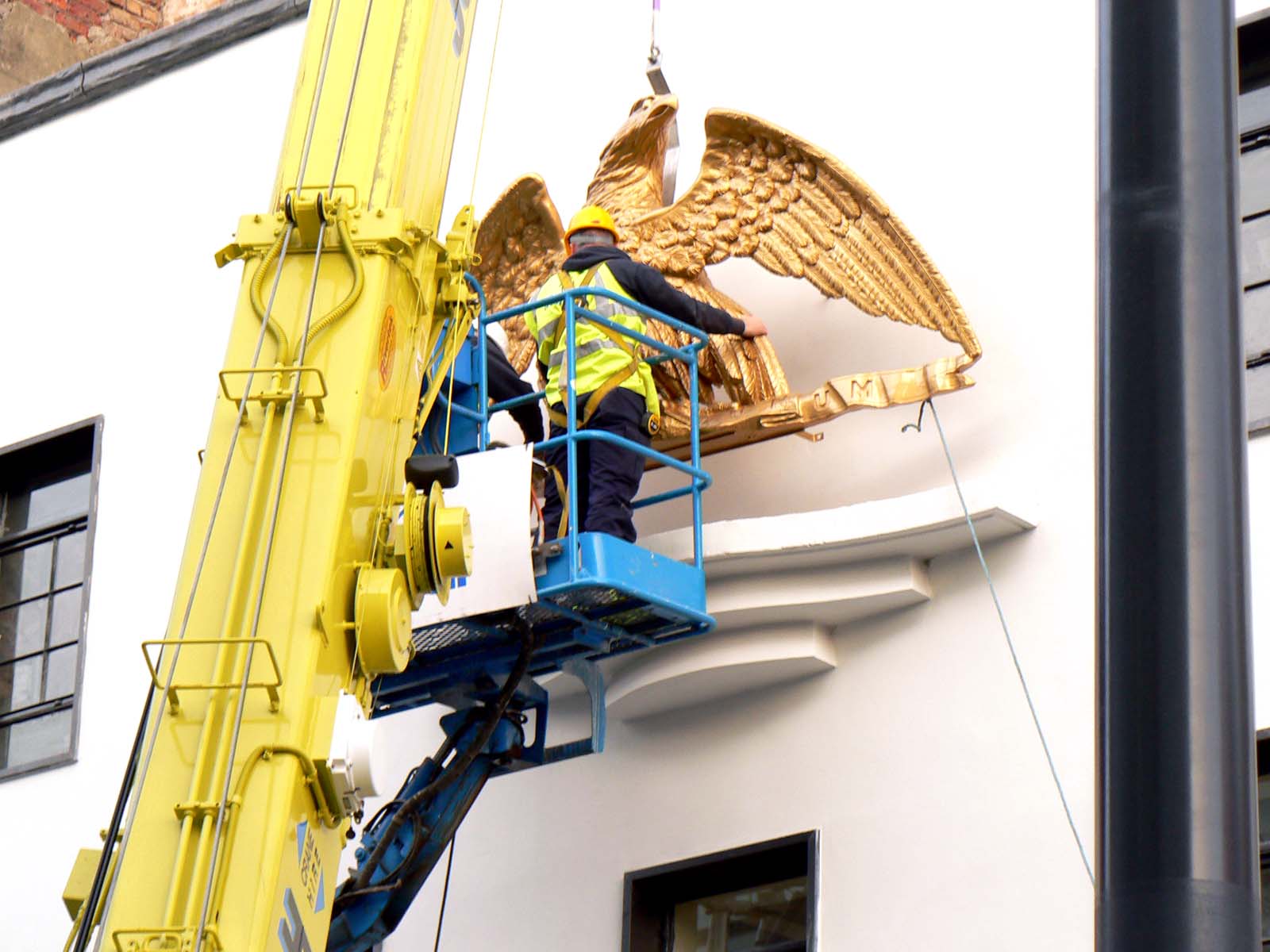 American eagle on shelf, being bolted down (click image to open larger image in a new window) |
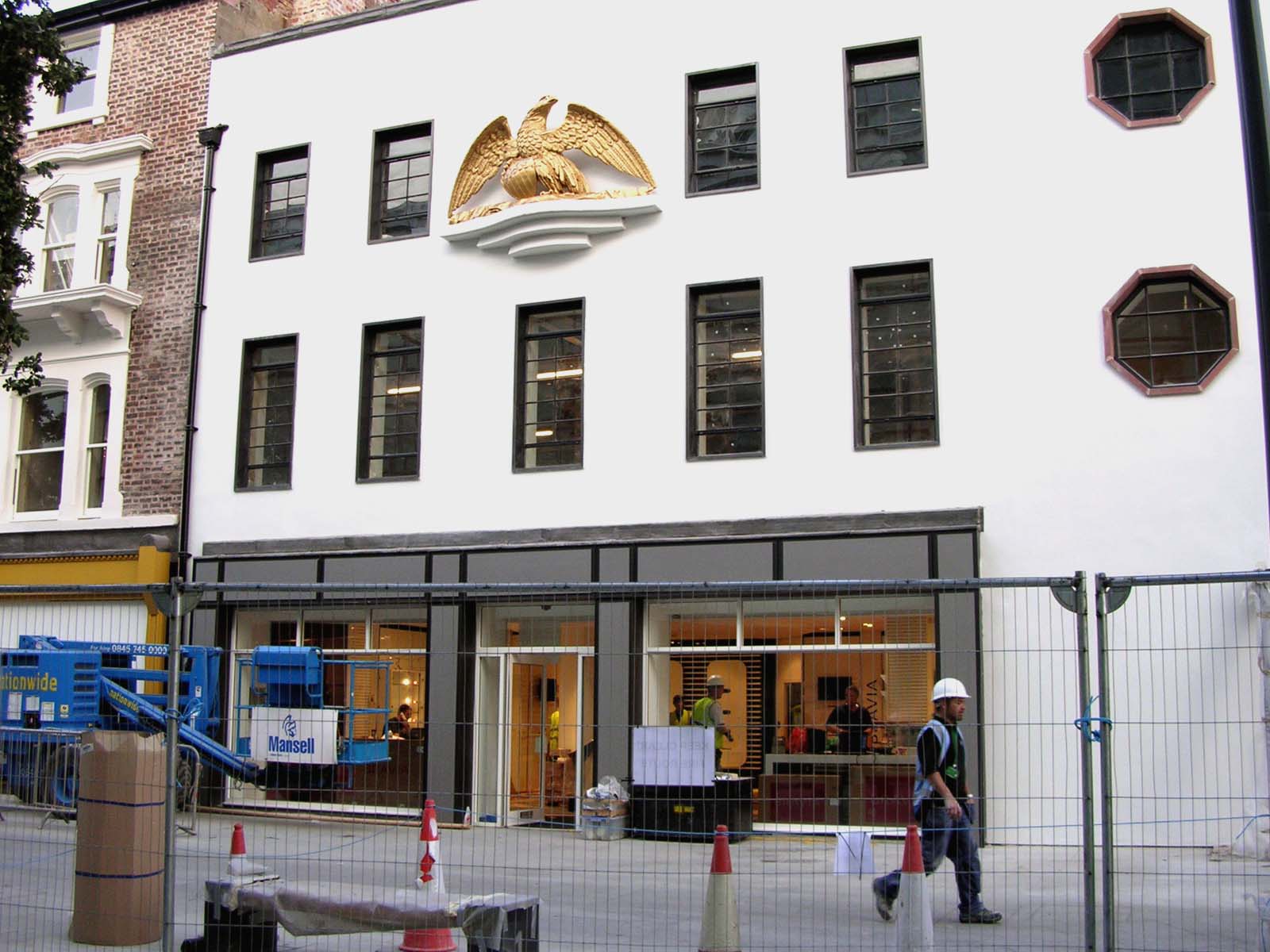 American eagle in place (click image to open larger image in a new window) |
The above Liverpool photos by Bob Jones of Liverpool.
The Reverend Peter Fontaine's son, Aaron Fontaine (1753-1823), moved west to Louisville,
Kentucky. His first wife Barbara Overton Terrell (1756-1798) died in route. Aaron and his
family settled in Louisville, where he became a planter and merchant. He married a second
time in 1805 with Elizabeth Whiting.
| Home of Aaron Benjamin Fontaine (1811-1880) in Louisville. This Aaron was the 16th and youngest child of Aaron Fontaine. |
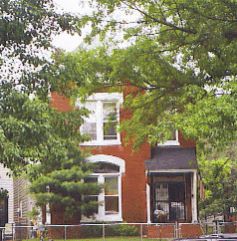 |
| Aaron Fontaine's second oldest son, James Terrell Fontaine (1776-1840), settled west of Louisville in Brandenburg, Kentucky. The home of his son, Peter Fontaine (1814-1883), and his wife, Martha Jane Foushee (1824-1878), still stands in Brandenburg on a bluff overlooking the Ohio River. |
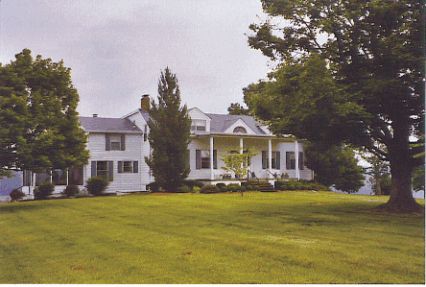 |
| Peter and Martha Fontaine and a number of their descendants are buried in the Cap Anderson Cemetery in Brandenburg. |
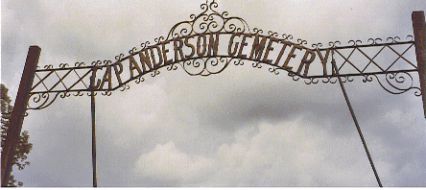 |
| Graves of Peter Fontaine (1814-1883), and his wife, Martha Jane Foushee (1824-1878) |
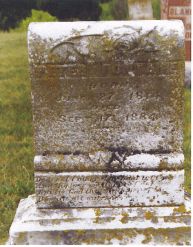 |
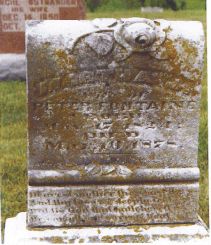 |
Revised May 2015